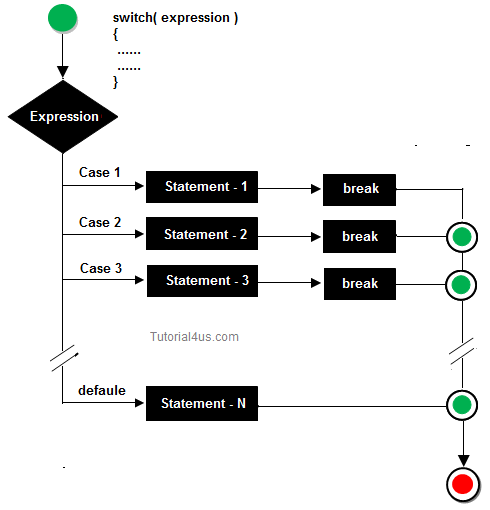
For example, if the value of numDay variable is 1, the output will be Monday and for the value of 7, it should be Sunday. After that, seven case statements are used one for each day of the Week. A variable is assigned a value (number of the day in Week) which is used as an expression in the switch statement. In this example, the switch statement is used with seven cases.

#BASE SWITCH CASE JAVA CODE#
} An example of using switch case and default statements (sorry for bad English.) Hello, Im taking Pre-AP Computer Science 1 and my teacher gave me a project that wants me to create a code that converts base 10 to any base using switch case inside a while loop. Java statement here if case 2 is evaluated as trueĭefault: // It will execute if none of the case is true The switch statement executes one or several code blocks, similar to the else if statement, depending on which of its so-called case statements are true. Java statement here if case 1 is evaluated as trueīreak // It will terminate the switch statement The general way of using the switch case is: Structure of switch case statement in Java After that, I will explain the difference between the if and switch statement and which one to use depending on the scenario. See the following section for structure and examples of using the switch case statement. The break statement is necessary to exit the switch statement (see explanation in the first example). The switch statement also works with the String class of Java, enumerated types, and a few special classes.It may work with primitive data types including int, char, byte and short. This article helps you understand and use the switch case construct in Java with code examples. These labels are said to be associated with the switch statement, as are the values of the constant expressions (§15. Any statement immediately contained by the switch block may be labeled with one or more switch labels, which are case or default labels. You may use different data types in switch Java statement. The body of a switch statement is known as a switch block.After evaluating the expression, the statements in the matched case are executed.The switch block, which is the body of switch statement may contain one or more case labeled statements.This is how the switch statement in Java works: Let's have four classes (ClassAddition, ClassSubtraction, ClassMultiplication, ClassDivision) extended from abstract class ClassOperation which has a number of variables and typeId representing the operation (1: add, 2:subtract, 3:multiply, 4:divide) that will be done.In Java programming language, the switch is a decision-making statement that evaluates its expression. There will be unlimited types of implementations with the new pattern matching switch but we will try to focus on the switch case by creating a simple scenario.

Let's look at the performance of the two implementation ways and compare them. The switch case statement in Java programming is a multi-way decision that tests whether an expression matches one of a number of constant integer values, and branches accordingly. It will be initialised in case a is 4, 5 and 6 but what if a is 28You're saying it shouldn't be able to happen, but things that shouldn't happen happen all the time, and the compiler likes to have all its bases covered.

However, if we come to a point where we can write our code both ways (the old way with primitives and so on, and the new way with pattern matching), which one will be preferred? Coding time, readability, memory usage, and performance are the criteria we should consider. At the point of return b, b should be initialised. It will change how we code, make the code cleaner and shorter, make it more readable in some cases, and so on. Output : Number of days in June 30 / using switch statement write a. An array is a systematic arrangement of objects, usually in rows and columns. java D:FelightBasic Java>java SwitchPuzzle b b /. It's obvious that the new switch statement will be very useful. The catch is that I'm not talking about Java arrays, but a data structure. If-else is often applied as a poor man’s polymorphism.

You can easily drop the ‘else’ keyword entirely from your programming vocabulary. Case String s -> ("String") Ĭase Color c -> ("Color with " + c.values().length + " values") Ĭase Point p -> ("Record class: " + p.toString()) Ĭase int ia -> ("Array of int values of length" + ia.length) ĭefault -> ("Something else") If-Else and Switch is likely your de facto mode to do code branching.


 0 kommentar(er)
0 kommentar(er)
